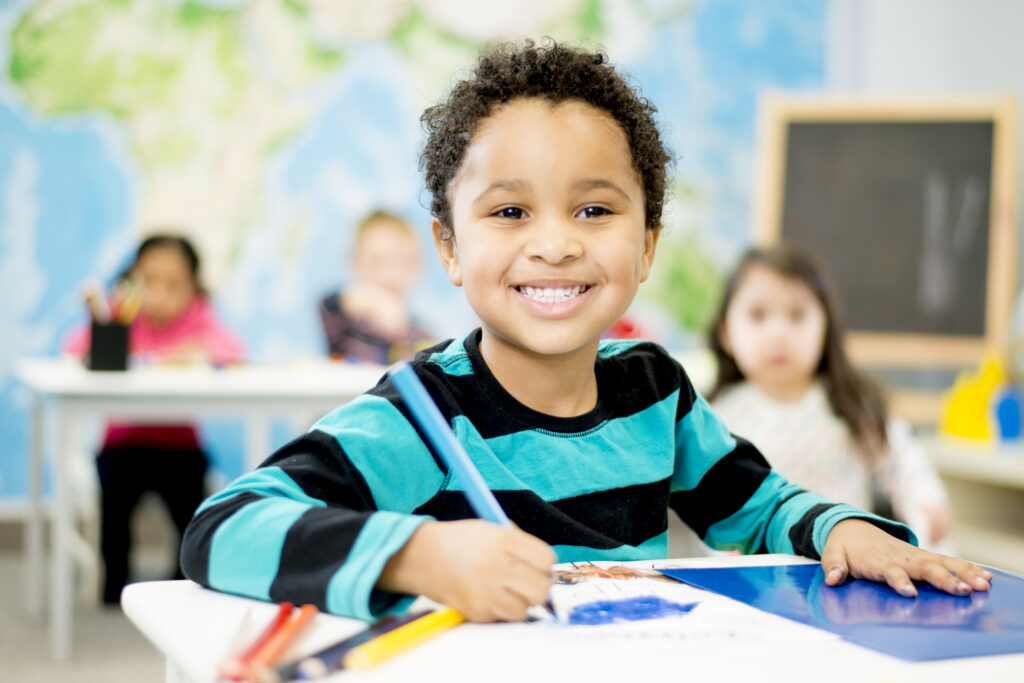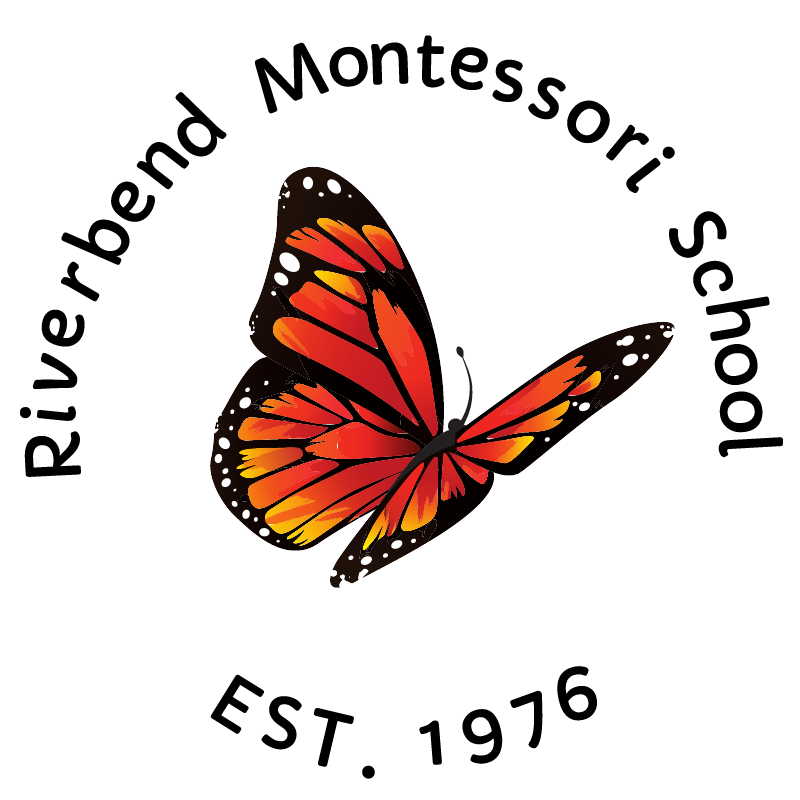Primary Class
Early Childhood through Kindergarten

About
The entire early childhood program focuses on guiding the child to develop a sense of order, increasing concentration, improving coordination, and gaining independence. The child has the freedom to move around the classroom selecting work that is appropriate for his developmental needs. This freedom allows the class to meet each individual’s needs.
Our low child to teacher ratio offers one to one teaching opportunities in a program of individualized instruction.
The early childhood class is divided into the following principal learning centers: Language, Math, Geography, Science, Practical Life, Sensorial, Art, Music, and Spanish.
Language
Emphasis on vocabulary building begins when the child enters the classroom and continues throughout the curriculum. The phonetic reading and writing program provides the phonetic foundation preparing the Montessori child to spell and read. The language area is designed to help the children enrich and refine their ability to express themselves and understand the expression of others.
Math
Math principles are acquired through the multi-sensory exercises where the child forms a solid foundation for understanding the basic concepts of our number system: quantity, sequence, hierarchical position, and the function of operations. The materials are concrete rather than abstract. They will be touched, manipulated, and counted. Concrete experiences are the vital first steps to develop a full understanding of abstract mathematics.
Geography
As in all areas of the Montessori classroom, the young child’s introduction to geography begins with the multi-sensory approach. Through a variety of globes, maps, picture cards, photographs, toys, and books that center on various cultures, the child satisfies his curiosity about the people of the world.
Science
Science in the primary level stimulates curiosity, encourages active observation, and builds scientific vocabulary at a time when the child is absorbing new language effortlessly. Materials evolve sequentially from inorganic to the organic. The younger child experiments, and the older child is able to verbalize what happened and why.
Practical Life
These activities form a bridge between the home and school environments, and they are the foundation for all other areas in the Montessori classroom. The Practical Life area focuses on the child developing a sense of order and on increasing the child’s concentration span. These exercises foster growth in thinking and organizational skills, which promote the logical, sequential thinking necessary for language and mathematical studies.
Sensorial
The Sensorial area provides perceptual training to expand the child’s sensory perceptions and knowledge of the world. The child learns to sort, differentiate, and sequence colors, dimensions, weights, forms, textures, sounds, odors, and tastes. Having mastered the skills of naming, making finer discriminations, and sequencing, the child is ready to move on to language, math, geography, and science areas.
Art
Once the child has mastered motor skills necessary to handle scissors, pencils, crayons, paint brushes, etc., they are free to construct their own creations. Care is taken to allow the children many avenues of expression using various media. The child is encouraged to plan, set up, actively create, and clean up each project.
Music
The approach to music in the Montessori classroom combines singing, playing, listening, moving to rhythm, creating a steady progression towards musicality. It is during the early childhood years that the sensitive period for music occurs, and the child develops the skills of listening and communication that are essential in the mastery of both music and language.
